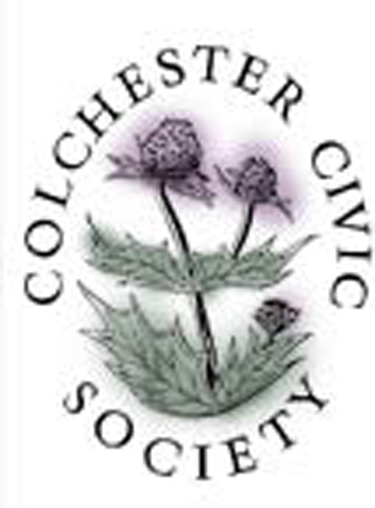The Colchester Civic Society was founded in 1964
Its aims are:
To help in preserving, developing and improving local amenities.
To encourage and arouse public interest in the beauty, history and character of the town and its surroundings.
To encourage a high standard of development and design in Colchester and its district.
Colchester Civic Society – A Brief History
The first Civic Society in Colchester was in existence as long ago as 1933 and was responsible for the purchase of Bourne Mill by the National Trust.
An area in Priory Street was cleared of houses to give a good view of the Roman wall and in 1935 the Society undertook to restore the timber framed building in East Stockwell Street that is now known as Peake’s House.
A member of the Society, Marshall Sissons, won the competition for the design of the library building in Culver Square.
This first Society closed in 1939 with the outbreak of World War II.
There was a short lived Society in the mid 1950s and it was known as Colchester Preservation Society. It was formed due to the threat of houses in the Dutch Quarter being condemned as being unfit for human habitation. With the help of Dr Kershaw, the Borough Medical Officer of Health, the houses were saved and the Society was awarded a Civic trust award.
Other buildings under threat of being demolished were saved. One of these was the Old Land Registry Office in Church Street and another St Mary’s House, now the home of the Quaker Meeting House, but previously the home of William Mason whose wife was a cousin to the artist, John Constable, who often visited the house.
The present Society was founded in 1964
In the early 1960s there was concern that partnerships between corporations and developers was leading to the destruction of town centres.
Ken Mabbitt and John Bensusan-Butt urged the formation of a Civic Society to combat this destruction. The new Society was officially launched at a meeting held in the Moot Hall on 24 June 1964.
During the early days the Society managed to save 19 Lexden Road from demolition. Today it is the language school.
Together with Scheregate traders, improvements were made to that area.
One thing the Society failed to stop was the demolition of the Three Cups hotel in the High Street.
Tree surveys were carried out and many trees were planted during this period. Also a working party improved the Colchester to Wivenhoe towpath, which has since become a tarmacked cycle path.

The Logo
The logo depicts Sea Holly or Eringo . In the 17th and 18th centuries the roots were boiled and soaked in sugar to produce sweetmeats that were considered a great delicacy. It was given to visiting dignitaries. By the 19th century production stopped as the plant became almost extinct. It is now illegal to dig up the plant. Today it grows in a few places on the beaches at Mersea Island.
It was adopted, as a logo, we are told, because the plant has prickly leaves and long beneficial roots. It seemed to sum up what the Society was about. It was hoped that the deep rooted instinctive human desire to control our environment would help make Colchester a better place to live but the Society would not be too prickly in obeying this desire!
However we have come across a reference to Colchester’s connection with Sea Holly that suggests a connection with another deep rooted instinctive desire! Ronald Blyth in his recent memoir The Time By The Sea has this to say:
“The sea pea and the sea holly (eringium maritimus), both edible, the first when one was starving, the second when one was sampling the local haute cuisine…. The sea pea was famine food the sea holly delicious food when sexual appetite was at a low ebb. It was candied at Colchester, the centre of the eringoe trade, and was on the menu for centuries.”
Also in the late sixties a major project involved the purchase of land in the Bourne Valley. A footpath connecting Bourne Mill and Cannock Mill was restored and cleared of 10 lorry loads of rubbish. This opened up 8 and a half acres of land between the two mills as an open space for which the Society was awarded a Countryside Award by the Duke of Edinburgh. This land was handed over to the care of Colchester Borough Council, who have continued to keep the footpath in good condition. There are up to date photos of this area on the conservation page
The Society managed to get the Roman River Valley granted conservation status and various pieces of land in the Borough were registered under the Common Lands Registration Act.
The Society fought against the demolition of Holy Trinity Church and also against the building of a small estate to be built north of the town centre that would have destroyed High Woods. The trees were saved but the small estate was built.
The Society has campaigned against a number of other developments over the years. It has also been responsible for the erection of plaques to commemorate notable people from the town. It has also been advising the Borough Council on street names for new roads.
For more information about our activities go to our What We Do Page
